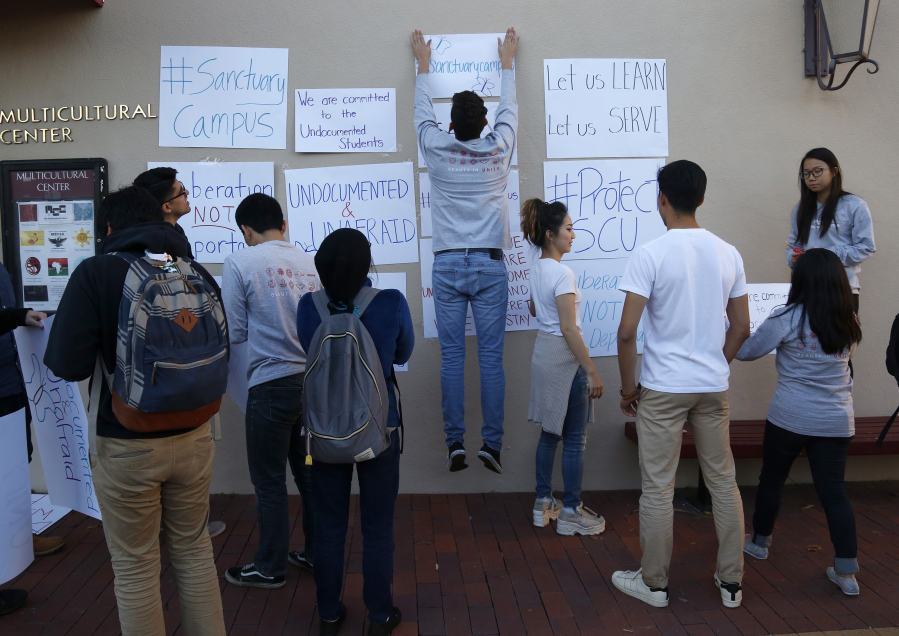WASHINGTON — Viridiana Martinez is tired of hearing how bad life will be for those — like herself –living in the country illegally under the Trump administration.
The 30-year-old immigration activist from Mexico has heard the president-elect’s rhetoric about her homeland sending its worst people to the United States and his plans to deport millions.
She finds the talk disgusting, but she also figures that if Donald Trump’s immigration record is anything like President Barack Obama’s in terms of what politicians will say in order to get elected versus what they actually do once in power, then Trump could turn out pretty good.
“Obama told us the right things, but he did the wrong things,” Martinez said. “In a way, I’m happy that we have an administration that thinks immigrants should be deported — and they’re saying that. They’re not saying something else. They’re not making false promises. I’m glad the cards are on the table and there is not a hidden agenda. Because then we can fight accordingly.”
For much of the country, the prevailing myth is that Obama is the president who dismantled immigration enforcement. But to Martinez and others, he is the “deporter in chief,” who separated thousands of families, held children in jail-like family detention centers and deported more immigrants than any other president before him.
He also fine-tuned and expanded a “deportation machine” that experts say Trump could tweak just a little bit and kick off a new flood of deportations.
Trump and Hillary Clinton made immigration a major part of their campaigns, but it was Trump’s incendiary talk about building a wall to keep immigrants out that sent shock waves through Latino communities. It also raised concern among industries, such as agriculture and construction, that would face daunting labor shortages if Trump deported thousands of their workers.
In Idaho, for example, workers there illegally make up 43 percent of the agricultural workforce, according to the Pew Hispanic Center. In North Carolina, that figure is 40 percent, while 22 percent of the state’s construction industry’s workers are in the U.S. illegally. In California, the breakdown is 35 percent for agriculture and 21 percent for construction. In Texas, it’s 30 percent for the construction industry and 26 percent for farming.
Similar concerns about labor shortages were raised during Obama’s first term, when he appeared to renege on promises to overhaul the immigration laws and instead boosted enforcement. Deportations increased in each of his first four years, peaking at 400,000 in fiscal year 2012.
During Obama’s years in office, the number of Border Patrol agents surpassed 20,000 for the first time. Nearly 700 miles of border fencing were completed.
Immigration enforcement spending rose to new highs. According to the Migration Policy Institute, an independent, nonpartisan research center, the Obama administration spent $154 million on federal immigration enforcement during his presidency in 2016 dollars. The George W. Bush administration spent $103 million, adjusted to 2016 dollars.



